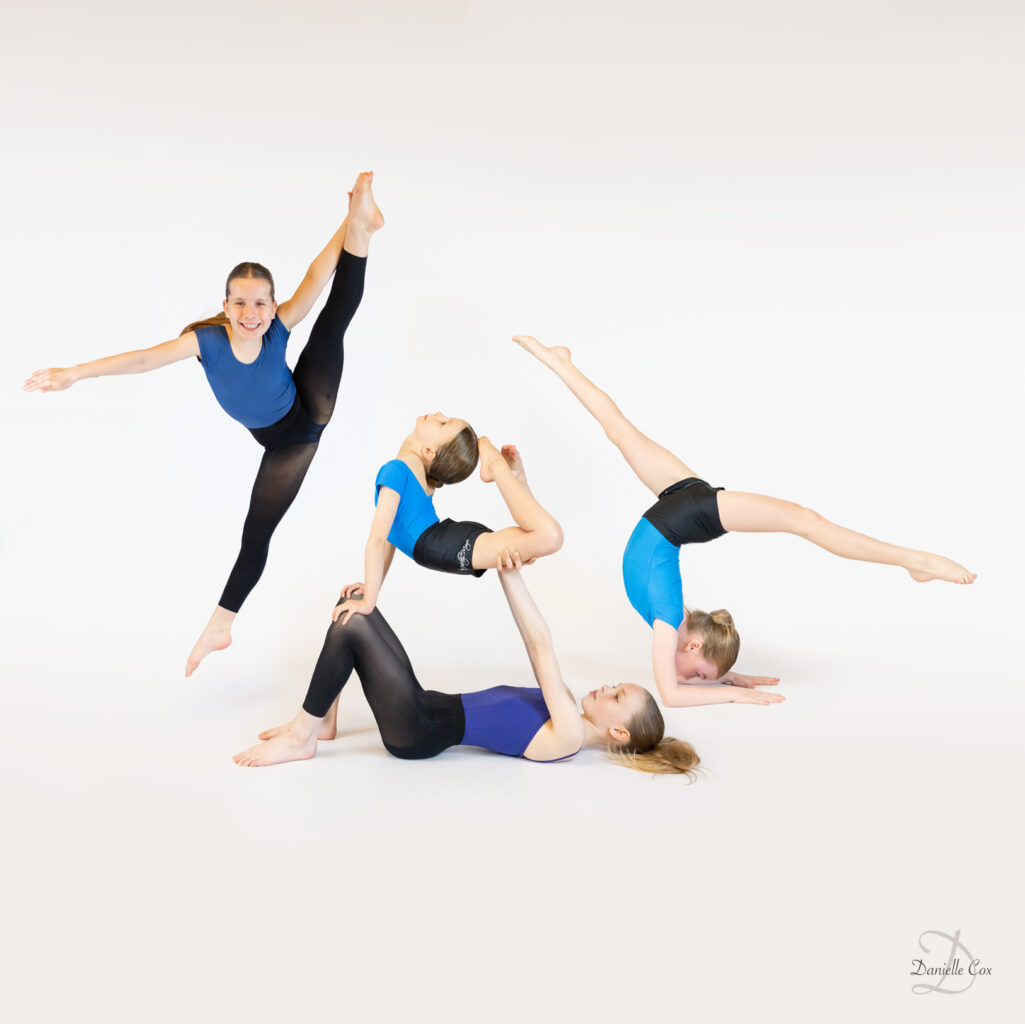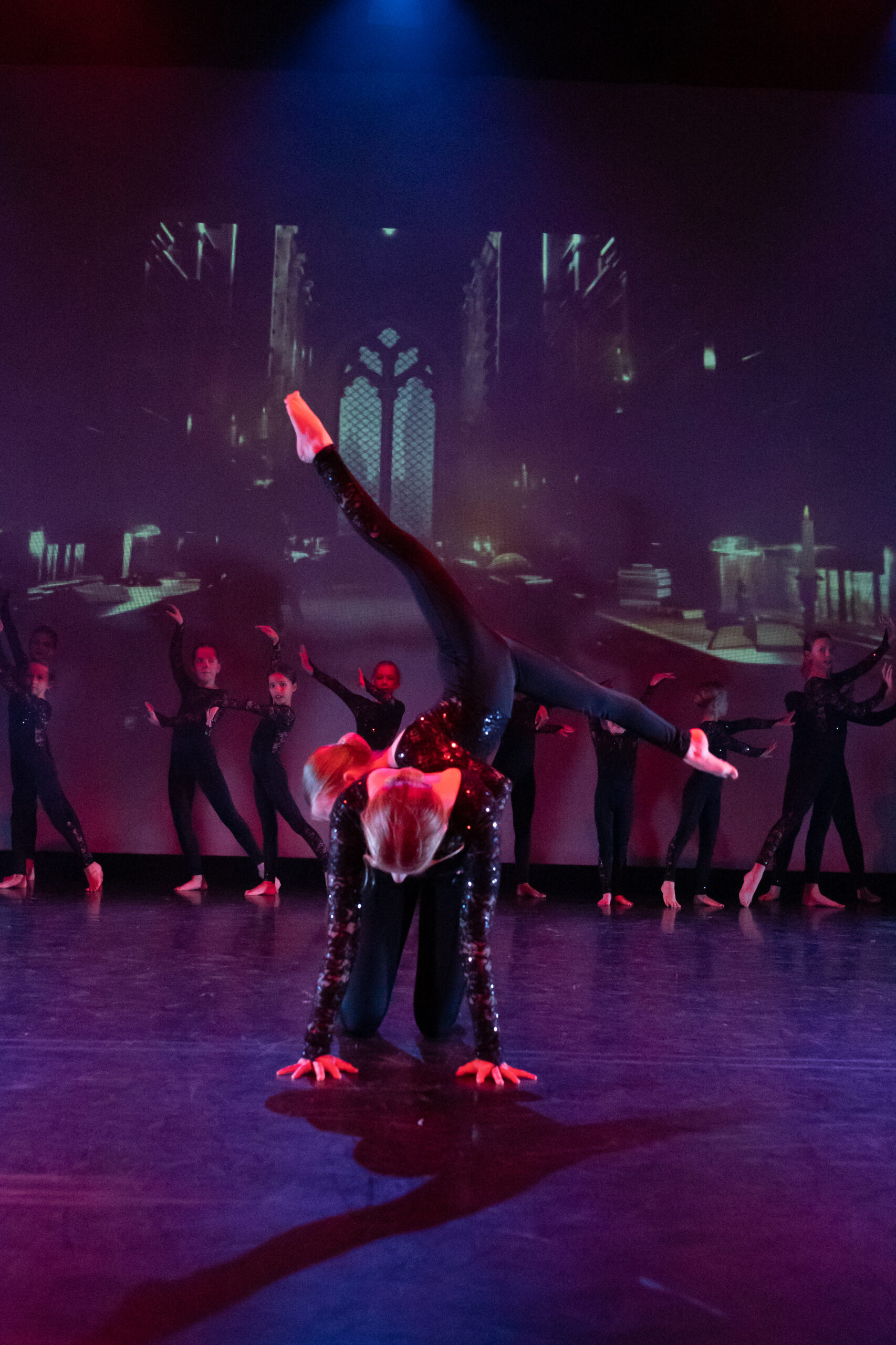
Acrobatic Arts is a professional curriculum for Acrobatic Dance. It is the beautiful fusion of the artistic motion of dance and the athleticism of acrobatics. AcroDance is not the same as gymnastics. An Acro Dancer must complete all of the skills on the hard stage without the advantage of a Sprung floor, while seamlessly integrating musicality, emotional expression, extension, control and line. The sprung floor allows the gymnast to complete much more difficult tumbling when compared to what is recommended in AcroDance. Skills taught in AcroDance might look the same as gymastics, but they are taught differently to compensate for the conditions. Neither the ‘Acro Dance’ way or the ‘Gymnastics’ way are wrong but they are different.
Students will learn to how to increase their strength, flexibilty, endurance, balance, limbering, tumbling, basic contortion, and partner/group stunting. Students will also be able to take examinations in AcroDance.


 Acrobatic Arts recommends a dancer should be training a certain amount of dance hours in order to safely execute the skills. Therefore Students age 6 upwards must be enrolled into another dance style within the Academy.
Acrobatic Arts recommends a dancer should be training a certain amount of dance hours in order to safely execute the skills. Therefore Students age 6 upwards must be enrolled into another dance style within the Academy.
Acro Dance Pre-School
The Acro Dance Pre-School Syllabus is designed to introduce physical literacy, coordination, creative movement and basic acrobatic skills to students aged three to five years.
Primary
Level 1
Level 2
Level 3
Level 4
Level 5
Level 6
From Primary to level 6 students will learn proper placement and technique for the foundations of Acro Dance, including handstands, cartwheels and bridges.
Level 7
Level 8
Pre professional 1
Pre professional 2
Pre professional 3
Students will build on the skills learned in Primary – L6. More in-depth classes in flexibility, hand balancing and limbering will be taught as well as more difficult tumbling (front and side aerials and back handsprings).
The Acrobatic Arts examination process is designed to motivate dancers. Having defined and achievable goals is a proven way to motivate dancers to excel. Dancers work through twelve exam levels, each designed to create a well balanced acrobat, including elements of flexibility, strength, balance, limbering and tumbling.
Examiners evaluate dancers against a set universal standard, allowing dancers and teachers to see where the dancer stands globally. During the exam, students can expect a class setting with the examiner directing the class and making notes throughout. Required elements will be critiqued and scored by the examiner. The exam will be graded ‘Distinction’, ‘Excellent’, ‘Highly Commended”, ‘Commended’, ‘Pass’ or ‘Retry’ based on the scores achieved for each element as well as grooming and attitude. Students who complete the level they are being tested for will receive a certificate to commemorate their achievement. Students who receive a grade of ‘Distinction’ will also receive a custom Acrobatic Arts medal. All students will receive a report card complementing areas of excellence and suggesting areas for improvement.
Dancers who complete all 12 levels can take the ‘Graduate Study’ and, upon successful completion, will be granted Certified Teacher status (AAC2).